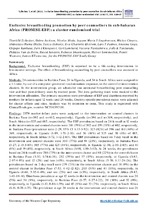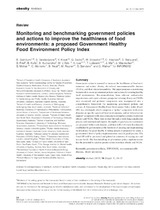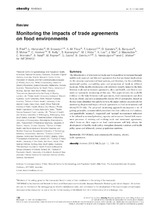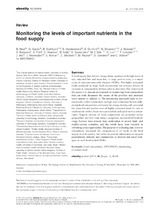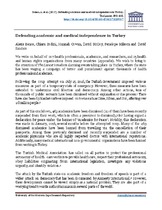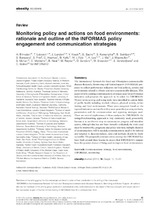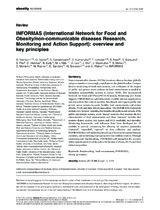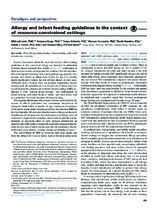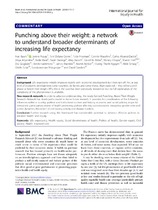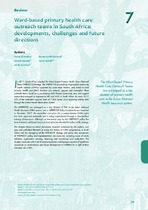Search
Now showing items 1-10 of 69
Exclusive breastfeeding promotion by peer counsellors in sub-Saharan Africa (PROMISE-EBF): a cluster-randomised trial
(Elsevier, 2011)
Background: Exclusive breastfeeding (EBF) is reported to be a life-saving intervention in low-income settings. The
effect of breastfeeding counselling by peer counsellors was assessed in Africa.
Methods:24 communities ...
Monitoring and benchmarking government policies and actions to improve the healthiness of food environment Policy Index
(John Wiley & Sons, 2013)
Government action is essential to increase the healthiness of food environments
and reduce obesity, diet-related non-communicable diseases
(NCDs), and their related inequalities. This paper proposes a monitoring
framework ...
Monitoring the impacts of trade agreements on food environments
(John Wiley & Sons, 2013)
The liberalization of international trade and foreign direct investment through
multilateral, regional and bilateral agreements has had profound implications
for the structure and nature of food systems, and therefore, ...
Monitoring the levels of important nutrients in the food supply
(John Wiley & Sons, 2013)
A food supply that delivers energy-dense products with high levels of
salt, saturated fats and trans fats, in large portion sizes, is a major
cause of non-communicable diseases (NCDs). The highly processed
foods produced ...
Defending academic and medical independence in Turkey
(Elsevier, 2017)
We write on behalf of 207 health professionals, academics, and researchers, and 25 health and human rights organisations from many countries (appendix). We wish to bring to the attention of The Lancet’s readers alarming ...
Monitoring policy and actions on food environments: rationale and outline of the INFORMAS policy engagement and communication stategies
(John Wiley & Sons, 2013)
The International Network for Food and Obesity/non-communicable
diseases Research, Monitoring and Action Support (INFORMAS) proposes
to collect performance indicators on food policies, actions and
environments related ...
INFORMAS (International Network for Food and Obesity/non-communicable diseases Research, Monitoring and Action Support): overview and key principles
(John Wiley & Sons, 2013)
Non-communicable diseases (NCDs) dominate disease burdens globally
and poor nutrition increasingly contributes to this global burden. Comprehensive
monitoring of food environments, and evaluation of the impact
of public ...
Allergy and infant feeding guidelines in the context of resource-constrained settings
(American Academy of Allergy, Asthma and Immunology, 2016)
Recent discussions about the need for revised infant feeding
guidelines in the context of allergy are founded in substantial
evidence-based research. Key studies (Table I)1-5 undertaken in
high-income country settings ...
Punching above their weight: a network to understand broader determinants of increasing life expectancy
(BMC, 2018)
BACKGROUND: Life expectancy initially improves rapidly with economic development but then tails off. Yet, at any
level of economic development, some countries do better, and some worse, than expected – they either ...
Ward-based primary health care outreach teams in South Africa: developments, challenges and future directions
(Health Systems Trust, 2018)
In 2011, South Africa adopted the Ward-based Primary Health Care Outreach
Team (WBPHCOT) Strategy. The WBPHCOTs are made up of generalist community
health workers (CHWs) supported by nurse team leaders, and linked to ...

